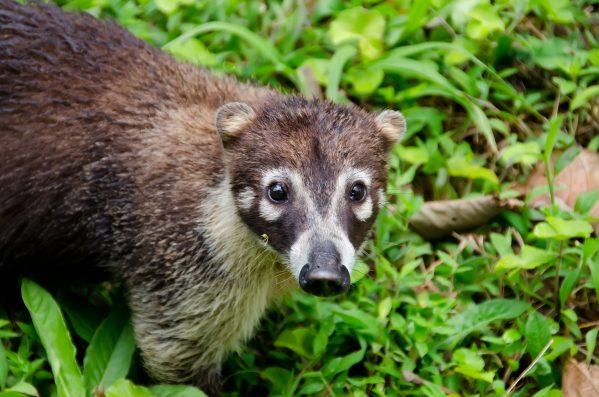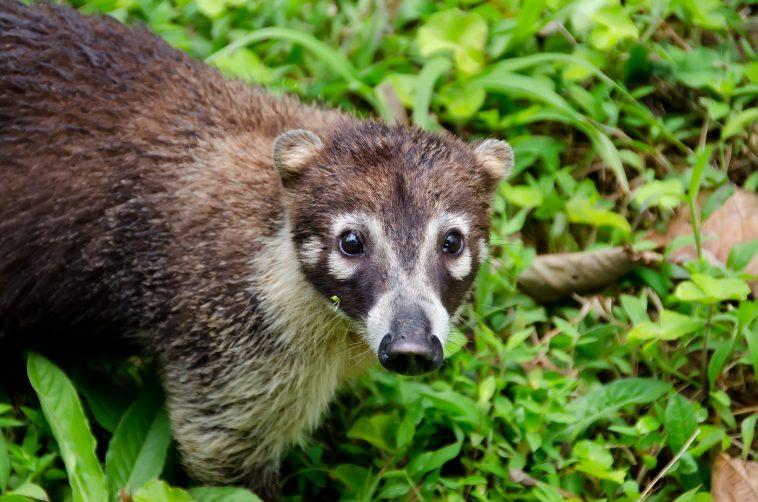There are many cute woodland creatures you often see scampering through the forest, such as deer, rabbits, or squirrels. But here’s one you probably won’t find in the wilderness unless you live in South and Central America.
The coatimundi, or coati for short, is native to those regions, and it belongs to the same family as kinkajous and raccoons. It makes sense because coatis kind of do resemble their black and white cousins with their bushy, ringed tails and furry physiques.
Unlike raccoons, coatis are active during the day. They have brown-colored fur and long, upturned snouts they use to forage for food. Female coatis are about the size of your average house cat, but males can grow twice as big.
The name “coati” is thought to have come from an Indigenous language of Brazil. It translates to “belt nose,” which refers to the coati’s habit of tucking its nose into its belly while sleeping.
Their diet consists of insects, fruit, and small vertebrates. Beetles, grubs, and termites are their main fare, but frogs, lizards, and mice can also make the cut. Their flexible, pig-like snouts give them a powerful sense of smell, allowing them to sniff out food in crevices and under leaf piles.
Adult males tend to keep to themselves, while females and their offspring stick together. Once male babies are old enough, they will go off on their own. The females band together in groups of 20 or more to help each other protect and raise their young.
Female coatis are known for being much smarter than their male counterparts and other species in the same family. In 2013, a study was published in the journal Brain, Behavior, and Evolution. It compared the brain sizes of male and female raccoons, kinkajous, and coatis. The study found that female coatis had larger frontal cortical volume because they live in social groups.
Coatis enjoy a wide range of habitat types. There are four species of coatis in total, and two of them like to live in mountainous areas, while the other two stay closer to the ground.
The two mountain coati species are native to Colombia, Ecuador, and Venezuela. Both of them are considered endangered by the International Union for Conservation of Nature (IUCN). Their populations face threats like biodiversity loss, being captured as pets, and hunting.

Sign up for Chip Chick’s newsletter and get stories like this delivered to your inbox.


